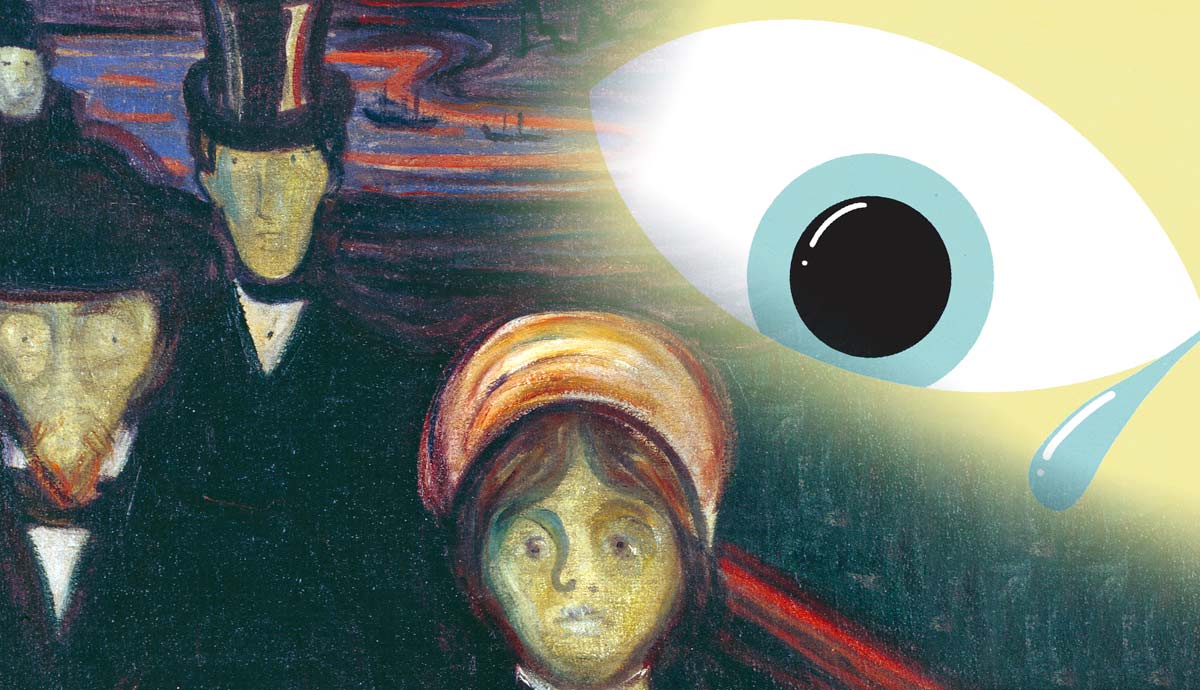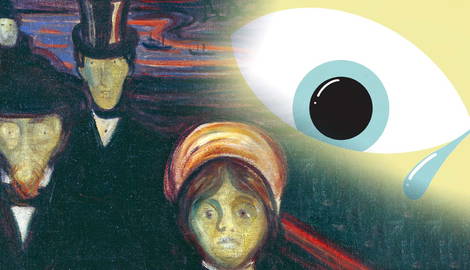
If it is true that we know fictional characters and events do not exist and yet have genuine emotions in response to them, are we being irrational? That is one conclusion drawn by Colin Radford from the Paradox of Fiction. This article will outline some of the major attempts (and problems of those attempts) to respond to Radford’s conclusion, thus allowing us to be genuinely and rationally moved by fictional works.
What is the Paradox of Fiction?

The paradox of fiction rests on the incompatibility of what seems to be three different truths: that we can feel genuine emotion in response to fictional events and characters; secondly, that we know the fictional events and characters to be figments of our imagination and not a part of reality; third, that in order to have a genuine emotional response to something—person, event, memory—we must believe in the actual existence of it.
All three conditions seem to be true separately yet irreconcilable together.
Colin Radford first addressed the paradox in his article How Can We Be Moved by the Fate of Anna Karenina. His tactic was to accept all of the three conditions of the paradox and bite the bullet of the conclusion that followed. Which is that we know that the characters and events in the fictional work do not and have never existed, yet we feel emotion for them. Radford says this is simply an irrational but happy fact about us.
Colin Radford’s Argument of Irrationality

When I was in elementary school, there was a lice epidemic. Once a week, we were organized into lines according to grade and in alphabetical order of last names. Once a week, I sat on the floor while a parent volunteer painstakingly parted my hair from right to left, searching for creepy crawlies.
The fear of these tiny critters was drilled into us – don’t share hairbrushes, hats, or pillows. Washing regularly won’t be enough. The bugs actually prefer a clean home.
Some of my friends were unlucky and had to go through chemical treatments. Some of my friends were unluckier still and had their heads shaved. Whether or not I have a justified reason for it, I now have a real phobia of lice, bedbugs, leeches, and other similar creatures.
Any slight itch on my scalp sends me into irrational panic, even if I know nothing is actually there. The knowledge of their non-existence (for now) does not stop the fear from occurring.
According to Colin Radford, there is symmetry between my phobic reaction to the thought of lice and my emotional response to fictional characters and events. Even though we know that this is a work of fiction and not based on reality, we still have a reaction. Further, even if the response is a result of something that is normally rational (i.e., empathy, sympathy, etc.), the emotions in response to fiction are, thus, irrational.
The formal structure of Radford’s argument is:
Premise 1:
It is true that we can have emotional responses from characters and events that occur within a fictional work.Premise 2:
But to have a rational, emotional response to something, we must have a belief about that something or someone existing in reality.
Premise 3:
It is not the case that we believe that fictional events and characters actually exist in reality.Therefore, when we are moved by works of fiction, we have an irrational emotional response.
So—just like my phobia of lice—I was having an irrational emotional response when I felt real sorrow in reading Frodo’s departure from Middle Earth or horror in response to Aldous Huxley’s Brave New World. The characters of Lord of the Rings are just words on paper, and the dystopian World State City doesn’t exist.
Herein lies the issue: isn’t it good to always be rational? Not that we are successful in doing so in all cases, but if we can be rational in a situation, that is the preferable state. Radford’s conclusion has implications: either we are not acting correctly when we respond emotionally to fiction, or maybe being rational is not so important.
Both options are unsatisfactory and seem intuitively wrong. This is where objections to Radford’s argument have started to rise. Is there a way to deny one of his premises successfully? Or reject that the conclusion does not follow from them?
Kendall Walton’s Quasi-Emotions

One philosopher who has put up an objective to Radford’s argument is Kendall Walton in his paper “Fearing Fictions.” However, instead of an argument for the rationality of the emotional response, Walton’s tactic is to deny that we have real emotions in these cases at all.
Walton argues that when we are engaged in a fictional work, we are playing a sort of make-believe game, and any emotional responses we experience are not real but are a part of the game and are also make-believe. He calls these “quasi-emotions.”
Walton is likely right that sometimes this game of make-believe could be what is taking place, but to many, it seems true that there are works of fiction that can cause us to experience real emotions – the same ones we have in response to things in our actual lives.
An example that highlights this is the typical emotions that arise when watching a campy horror film vs. one that plays on deeper fears in our psyche.
The former will surely make us jump and even watch while peeking through our fingers, but this does not resemble the real emotion of fear. It is more analogous to walking through a haunted house in a theme park.
However, if we take an example of horror that is not a campy slasher or monster film, things may shake out differently. Modern horror films have mastered the subtle art of physiological horror: the uncanny, unknown, and unpredictable.
Think of a horror film or novel that left you feeling on edge for days, maybe weeks after watching it. Intuitively, we can conclude that there is a real difference in the quality of emotions in these two cases. The former isn’t just stronger – it’s real.
Rosebury’s Theory of Thought Content as the Objects of Emotion

Another move that philosophers have tried to make is to tackle the second premise from Radford’s argument – they deny that to have a rational, emotional response to something, we must have a belief about that something or someone existing in the actual world.
It is generally agreed that emotions require an object that the emotion is about. We are sad about something, angry at someone, or happy for ourselves. Regarding fiction, this has been taken to mean that we need to have a belief about the actuality of the character, event, and world that we are responding to.
However, some have argued that we can instead have a belief about the universal characteristics of what the response is regarding.
One of those who argued in this way was B.J. Rosebury. According to Rosebury, when we imagine or entertain the thought of a fictional entity or event and have an emotional response to this entity/event, we take the thought as the intentional object of our emotions. We take this fictional entity or event, and we can classify it accordingly based on what sorts of beliefs we have about similar things.
For example, let’s take Vladimir Nabokov’s Lolita. Our main character, Humbert Humbert, is a predator who fixates on and ultimately abuses a child. According to Rosebury, the emotions of disgust that you ought to have for this character are not about Humbert as a particular. Rather, it is of the universal characteristics he exhibits of being a pedophile, abuser, etc.
So, when we are engaged in reading Lolita and are faced with Humburt’s actions, this can allow for the rise of a rational yet genuine emotion in response.
A weakness of this theory is that it just does not quite capture the truth of the matter. I don’t literally feel disgusted toward my thoughts here—the thought itself is not a predator—I feel disgusted at what the thought is about.
A Possible Conclusion the Paradox of Fiction

Peter Lamarque takes what Rosebury has argued and refines it slightly so that it falls more in line with what is believed to be the intuition behind Rosebury’s view.
The solution Lemarque proposes is that it is not the thought that is my intentional object to the rise in emotion, but the thought content – what the thought is about is a sufficient and acceptable intentional object for emotion.
I am not disgusted literally by my thought of Humbert, but instead of my thought of a fictional person with these instantiations of terribleness. This is the same disgust that I would feel for anyone with Humburt’s traits, regardless of whether they are real or fictional.
This approach is ultimately much more palatable than Radford’s conclusion and untangles the paradox of fiction. In fact, not having an emotional response to fiction such as Lolita, Brave New World, or Lord of the Rings could indicate irrationality (or worse!). It’s rational to have positive emotions towards positive traits and negative ones towards negative traits.










